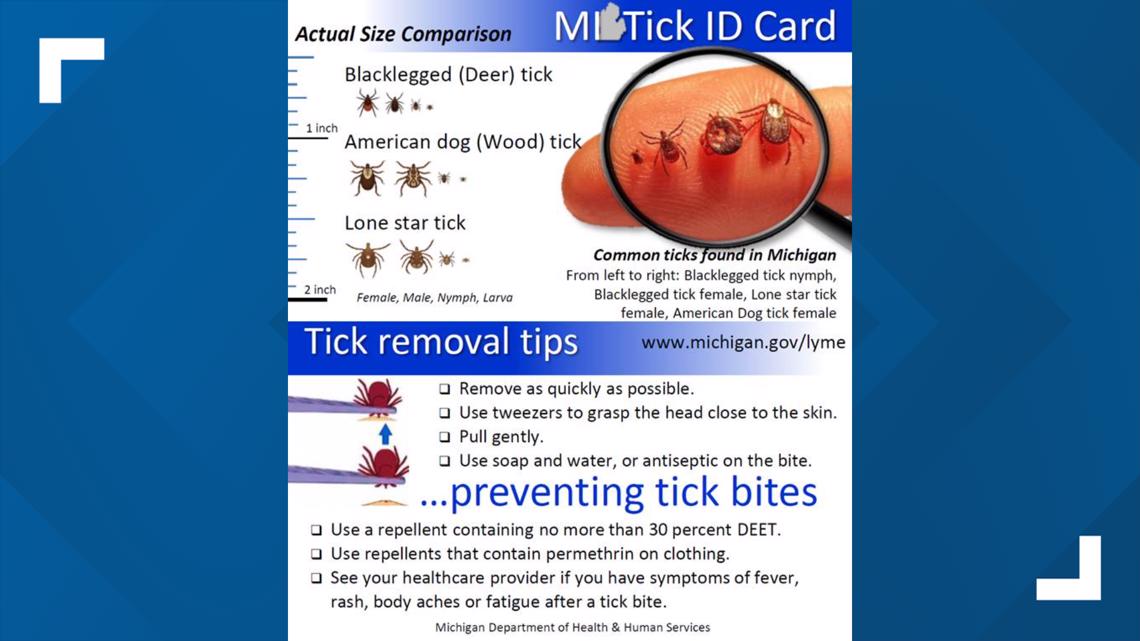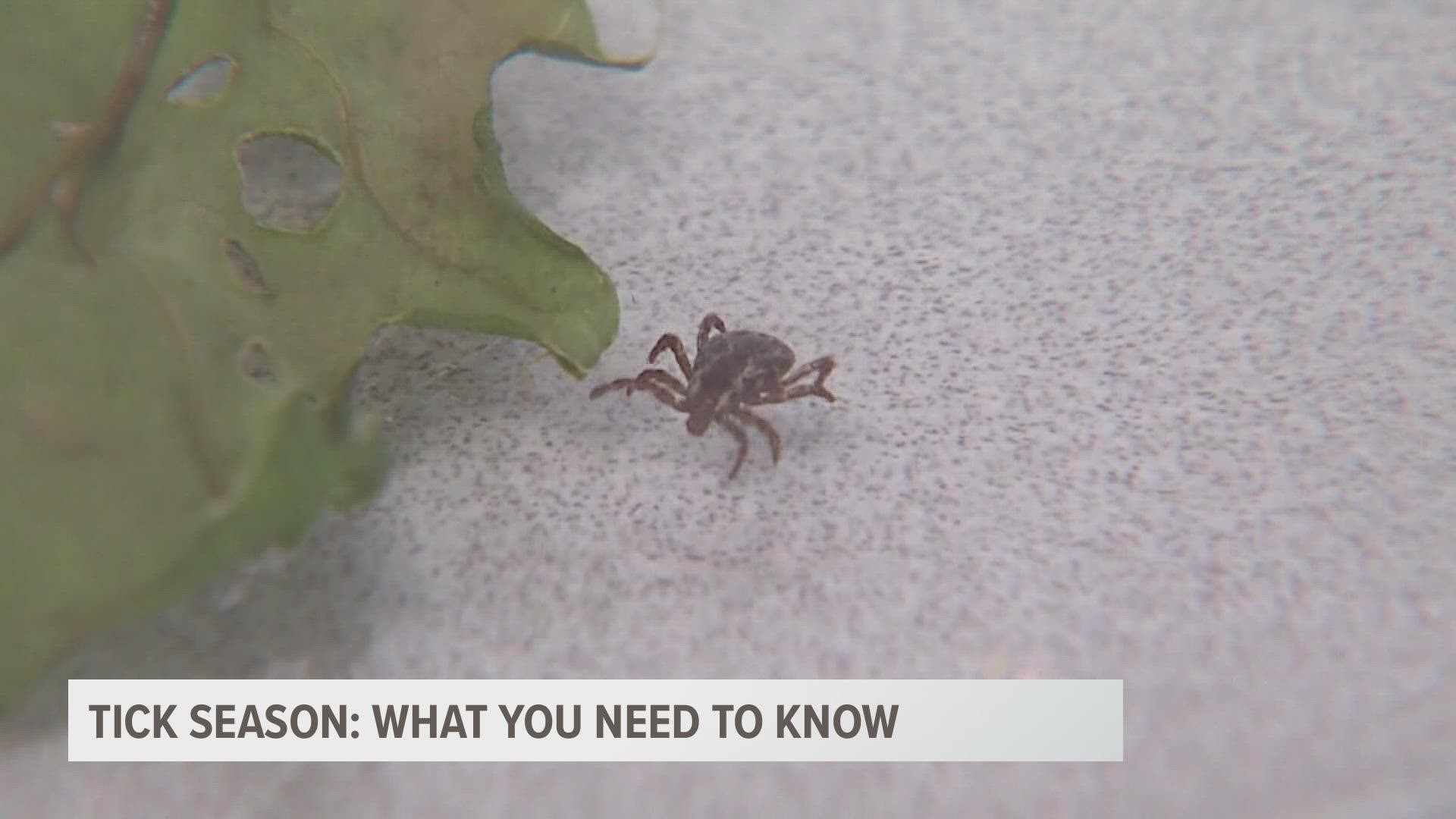GRAND RAPIDS, Mich. — Another sign of spring and the warmer weather — tick season. Tick season generally begins in early spring and lasts through the fall. It’s a known issue for Michiganders, but the extent of its impacts in the future likely will worsen.
“Tick season is something that we're probably going to increasingly learn to live with,” says Dr. Will Miller, Associate Professor of Biology at Calvin University.
As we spend more time enjoying our favorite outdoor activities, it’s an important reminder of the tiny pest that can cause large health concerns.
“The main tick that we see are called American dog ticks. And they tend to be the big gray ones. They're much larger in size than a deer tick. And they are a much lower risk for any sort of pathogens that they do carry,” says Matthew Allen, Environmental Health Supervisor for Ottawa County.
“Blacklegged ticks, deer ticks are the ones that carry Lyme disease or have the potential to carry Lyme disease. And those are the ones that people get the infection from,” he adds.


Easy steps to follow outside will go a long way to limit the risk.
“It all deals with prevention. So wearing long, loose fitting clothing, light colored, and using DEET is one of the most effective repellents for it," Allen says. "And staying on trails, not going off into brushy areas or areas with tall grass.”
“But then always, no matter whether you've been at the park or in your backyard, it would be to do a tick check. You shake your clothes out, you take those off and check some of the areas for ticks,” he says.
But as our climate changes, ticks are thriving. Miller has been investigating the spread of blacklegged ticks in southwestern Michigan the past few years.
“Long term trends, what do we know from our area. Blacklegged ticks have been expanding in Michigan from the at least in the Lower Peninsula, outside of that southwest corner, up the Lake Michigan shoreline, and now more progressively inland over the last 20 years,” says Miller.
“And I think the data are playing it out that way. We continue to see more and more ticks each year. And we are really, if you consider Kent County, we're on the expansion front, right where we're at. So this is going to be continuing to be an ever increasingly important question and public health concern,” he adds.
Furthering the problem, a third type of tick is beginning to emerge in Michigan.
“Third tick, and by far, probably the least common that people may come into contact with is the lone star tick. There are noted places where it has been picked up in southwest Michigan, but comparatively to the other two, it's much less established,” says Miller.
“Lone star ticks are showing up exactly where the blacklegged tick showed up 20 years ago, in terms of where it's expanding from. So I don't think it is out of the question that we may see similar northward and inland expansions of that tick as well,” he remarks.
Despite the increasing risk each year, it’s important to circle back to simple preventative tips.
“Just do the do a little homework before you go out, make sure that you know what you need to do to protect yourself,” Miller says.
More information can be found on the Ottawa County Health Department website, the Michigan Department of Health and Human Services website and the Centers for Disease Control and Prevention (CDC).
►Make it easy to keep up to date with more stories like this. Download the 13 ON YOUR SIDE app now.
Have a news tip? Email news@13onyourside.com, visit our Facebook page or Twitter. Subscribe to our YouTube channel.

